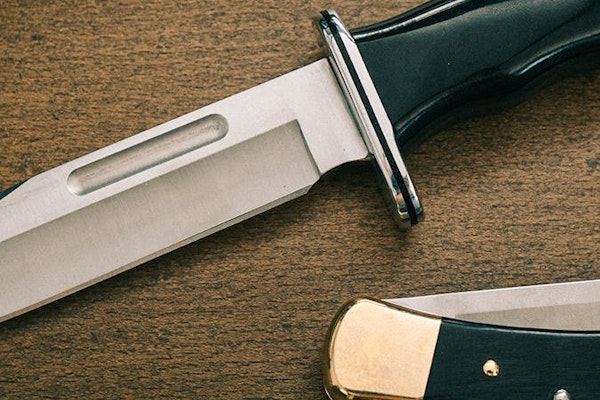Spring. That time of year in the Rockies when Mother Nature teases us with fleeting 60-degree days, muddy trails, and the illusion that it’s time to break out the shorts and sandals. Inevitably, these will be thrown back into the closet in favor of multiple puffies and snow boots. Some of the year’s biggest ski objectives are still ahead, but most of us are seriously lacking vitamin D and ready for some sunshine. Here in Montana, Spring marks a mass exodus from our snowy mountain town to the sandstone crags and towers of the desert.
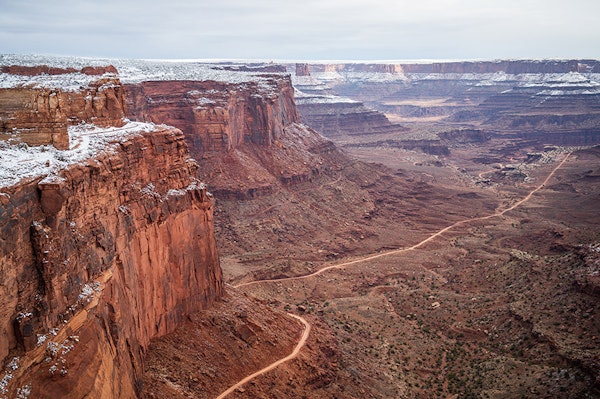
After a long year without traveling outside of the state, and a long winter without gym climbing, my husband, Kale, and I were having visions of long days of crack climbing in the sun. I even packed my bathing suit (just in case). We’ve experienced Spring in the desert before – I should have known better.
We prepared Van Gogh for the 10-hour drive. She’s a 2003 Chevy Express Box Truck we bought in 2017 from a hole-in-the-wall car dealership. She came equipped with a 6-liter V8 engine, 180,000 miles, and a lot of complimentary rust and corrosion. We built her out with two storage benches, a sink and counter, and a 3-burner stove, and topped her off with a solar panel. My husband works in carpentry and he taught me how to install the wood floors, sand, and varnish them. We epoxied the counter top in our landlord’s barn – fighting air bubbles and flies for hours.
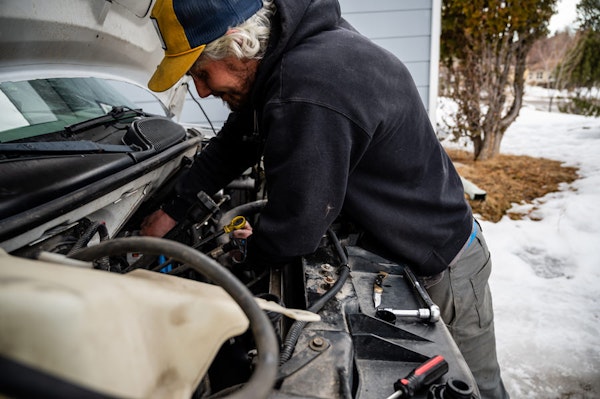
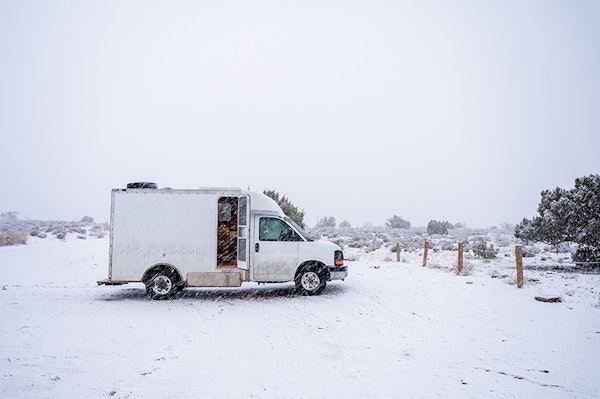
Van Gogh is not “reliable” per say, but the added “we-might-not-make-it-there” factor always keeps our road trips exciting, and is a constant reminder to go with the flow.
On our first cross-country trip in the box truck, she almost lost a wheel at the top of 4th of July Pass in Idaho as I was driving out to meet Kale in Squamish, BC. Just a few months ago the engine turned off while we were driving down the highway…towing a trailer with a snowmobile.
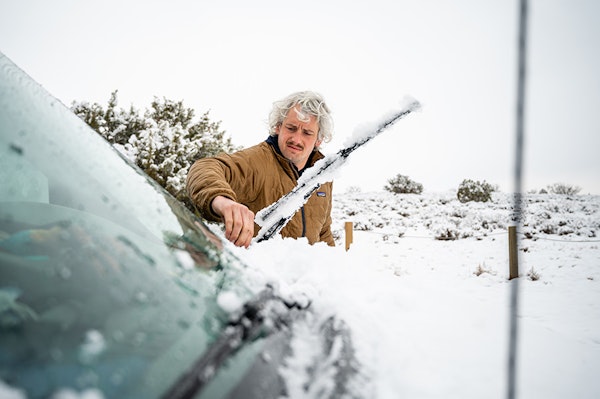
We spent two weekends preparing our steed for the trip. After a few classes at what Kale likes to call “YouTube University,” he replaced the brakes, water pump, and ignition switch. We packed everything we could possibly need for a climbing trip, and hit the road.
We pulled into Moab in the early evening, in a snowstorm. By morning, more snow had accumulated than we’d seen in Montana in weeks. Looking out to the La Sal Mountains we briefly regretted not bringing our ski gear. In the desert, you have to wait a solid two days, sometimes longer, after a precipitation event for the sandstone to dry, otherwise you risk damaging the rock or your gear failing.
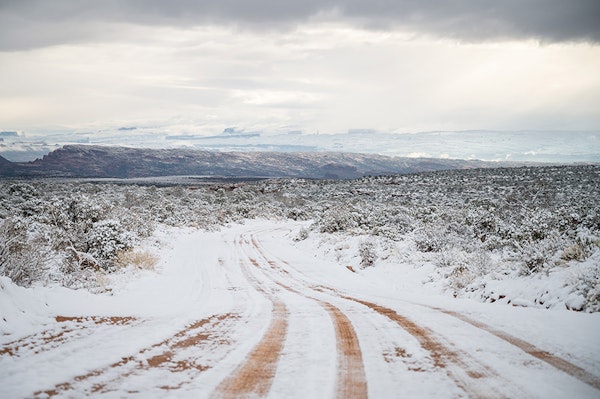
The gear we use for free climbing – the type we were doing on this trip – is mostly cams and nuts. We place them in cracks and clip them into our rope to connect us to the wall as we climb, allowing us to fall without hitting the ground. We joke that our rack of gear – shiny, expensive, and jingly – is much like jewelry.
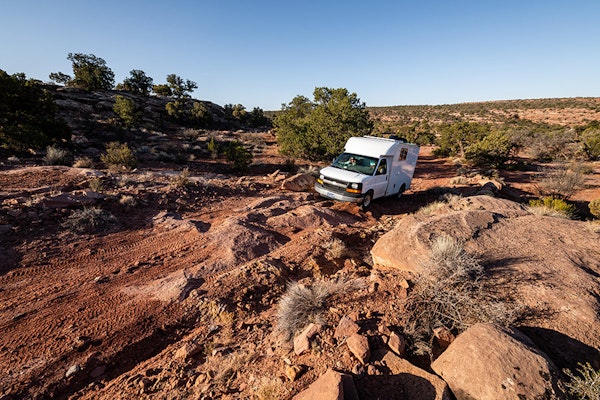
We spent three days running and hiking through Canyonlands National Park waiting for the rock to dry, and rallying the van up and down as many 4WD dirt roads as she could handle – waving to the side-by-side and lifted jeep drivers as they stared at us with confusion.
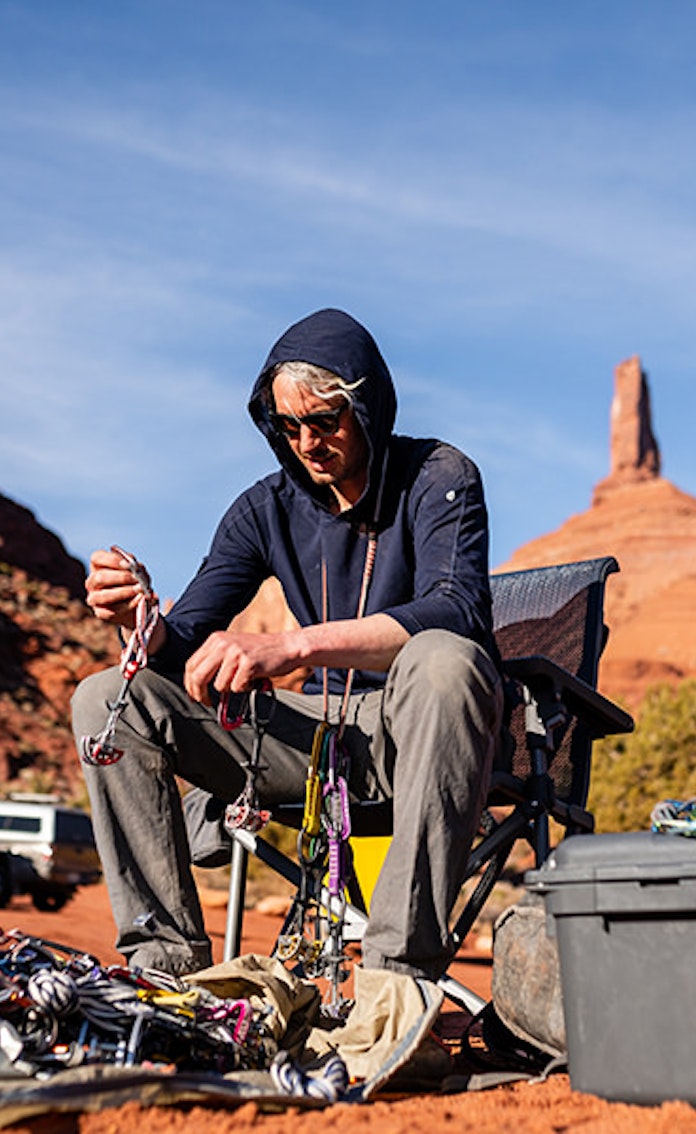
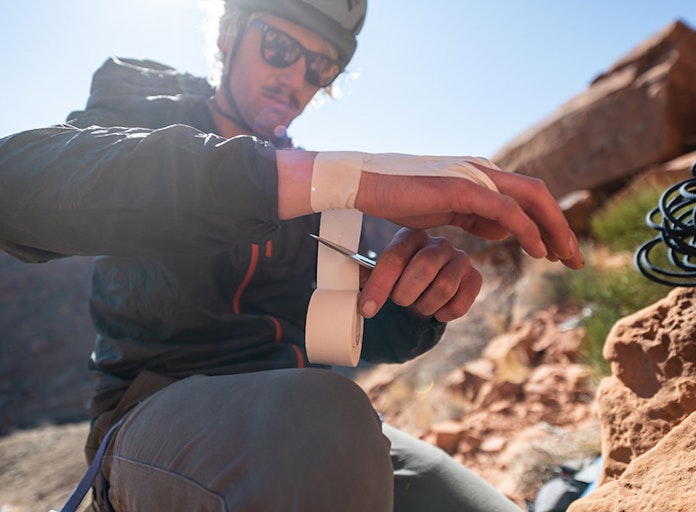
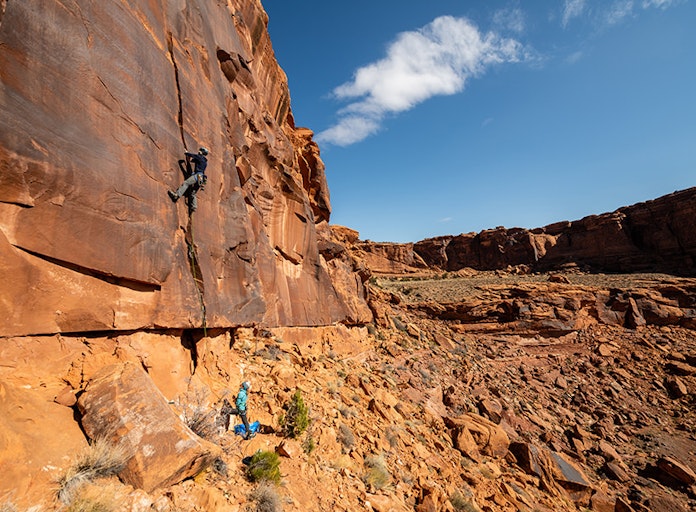
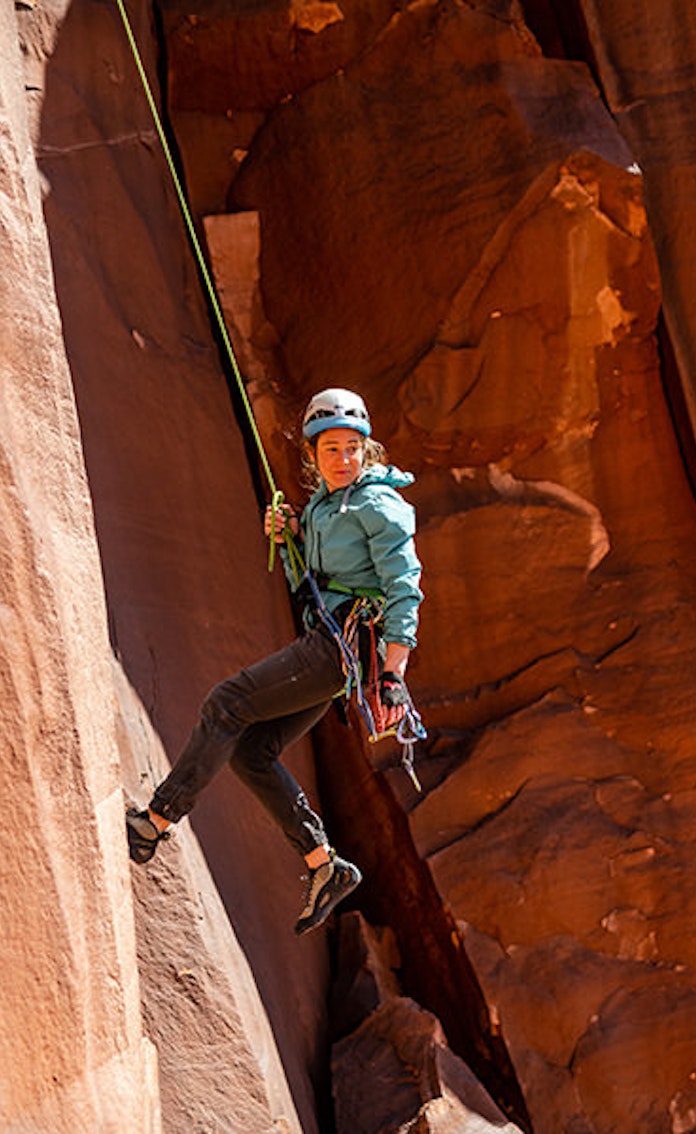
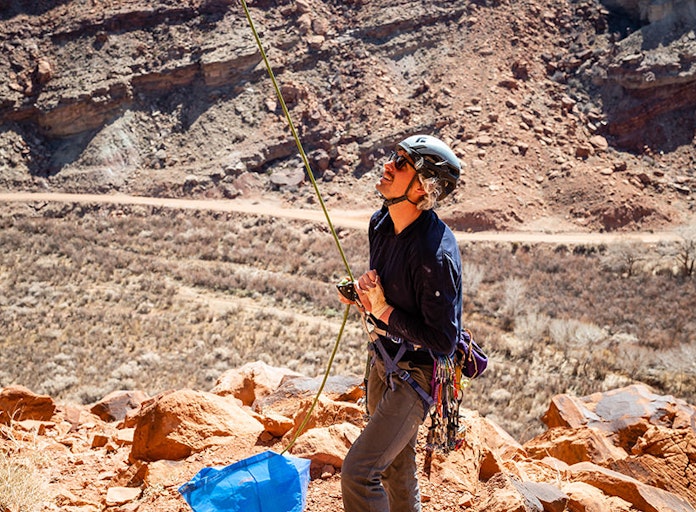
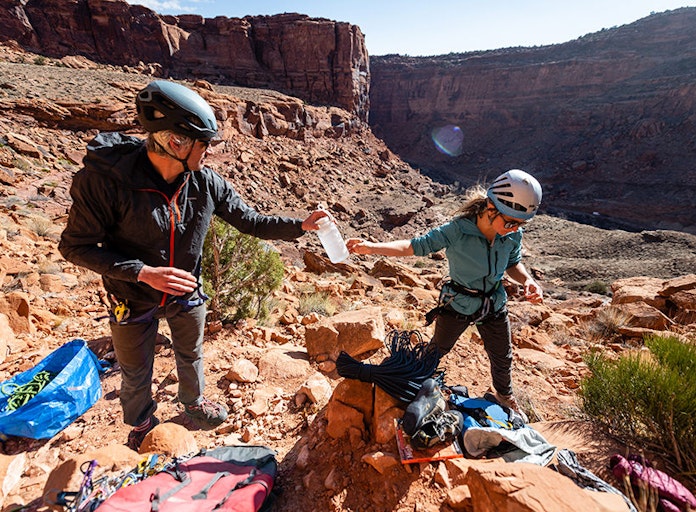
When we could finally get on the rock, we set Castleton Tower, a nearly 400-foot sandstone spire, as our destination. The last time we were there in 2014, we climbed the North Chimney, one of the classic routes on this tower. At the time, we were a new couple, and new to free climbing. From the summit we looked across to another formation, The Rectory, at a pair of climbers on a much more difficult route than the one we’d just finished — saying out loud to each other how cool it would be to one day climb it.
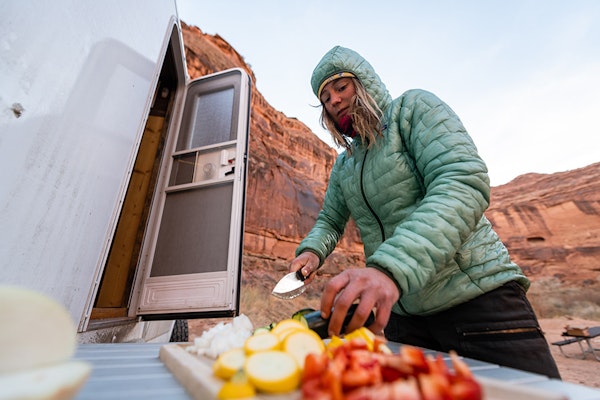

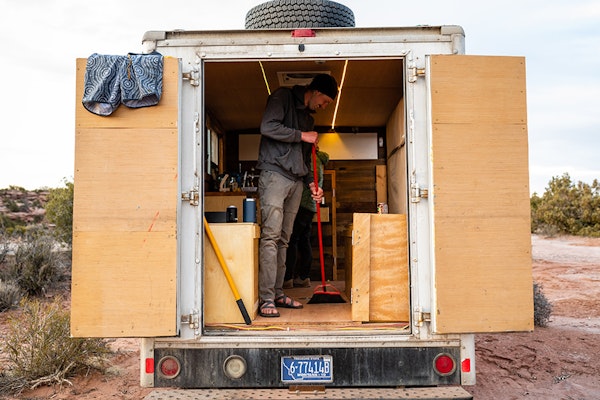
The Rectory would be our next day’s objective – four sustained pitches of crack climbing up the southern prow; a total of 400 vertical feet.
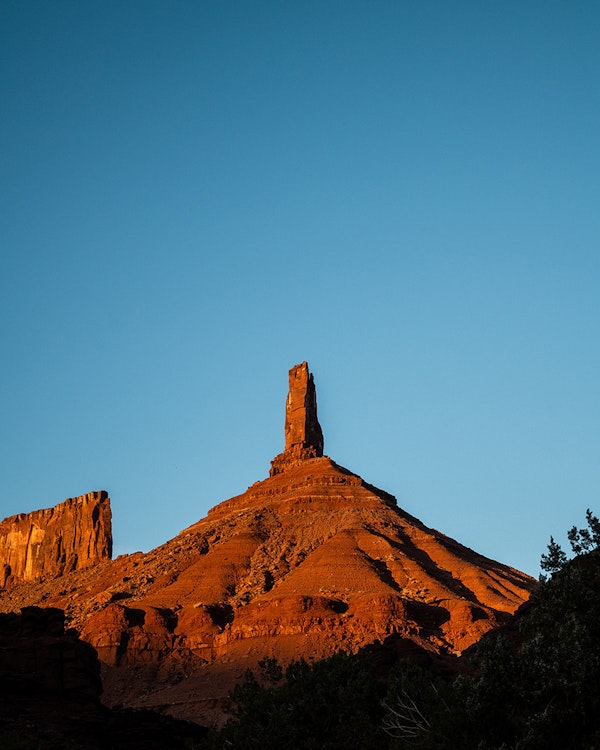
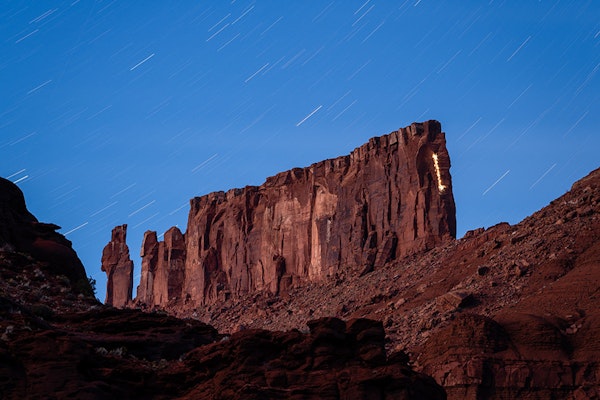
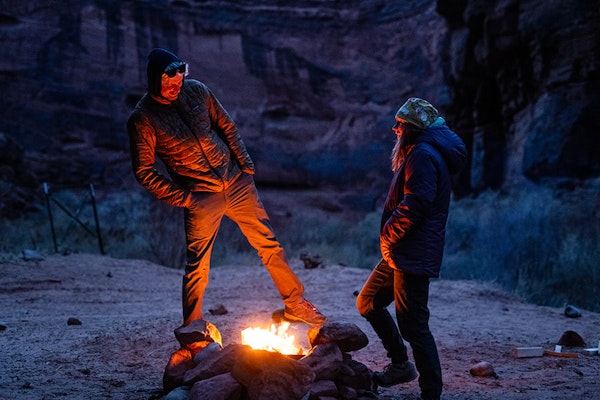
Rock climbing is much more than strength and technique – it takes good communication and incredible trust in your partner that they will belay you safely.
There are so many elements to free climbing that must constantly be balanced, such as how far below you your last piece of gear is, what size gear you need for the cracks, whether the gear will hold a fall, and how much gear you have left in relation to how long the pitch is. You’re managing all of these thoughts in your mind while trying not to fall, all while placing the next piece.
My favorite part about this type of climbing is that everything feels like uncharted territory. Unlike climbing a line of bolts on a wall, it’s up to the climber to decide where to place protection and to navigate the obstacles accordingly—it feels like exploring a new frontier.
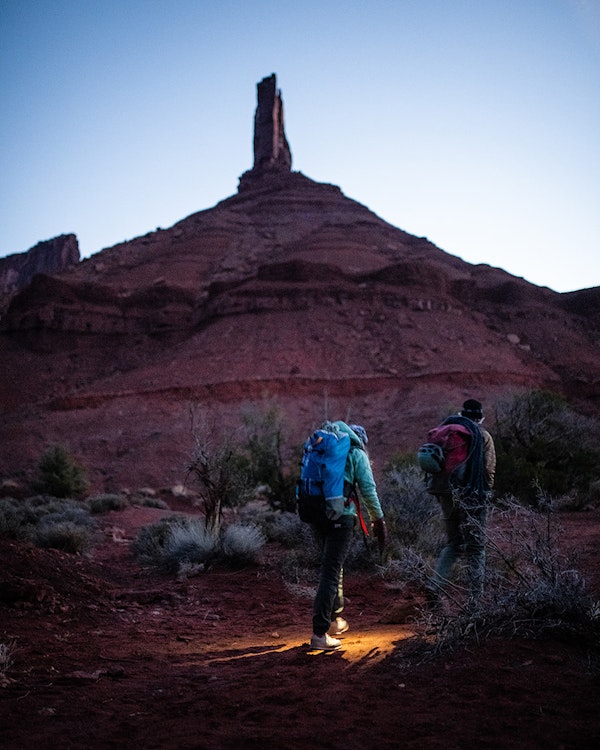
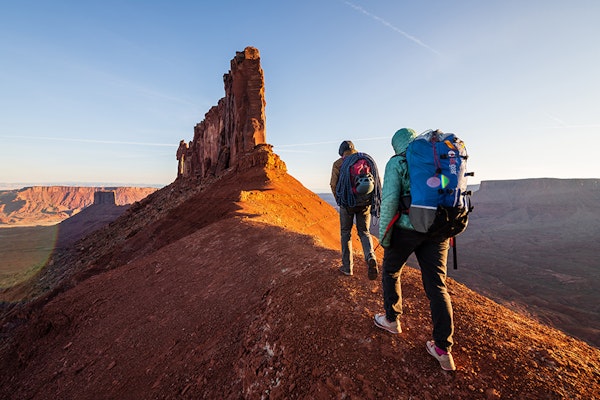
The next morning, we woke up early to a cloudless sky filled with stars, finished off our coffee, and started up toward the towers. After about an hour of hiking, we made it to the saddle between Castleton and the Rectory, which were likely at one point part of the same formation and have since been separated with a sizable gap by millennia of erosion. With the saddle to ourselves, which is almost unheard of, we watched the sun slowly cast its warmth across the southern face of the Rectory, letting the cold rock warm before racking up and starting up the route. After several hours of beautiful splitter crack climbing, we made it to the summit and looked back toward Castleton Tower.
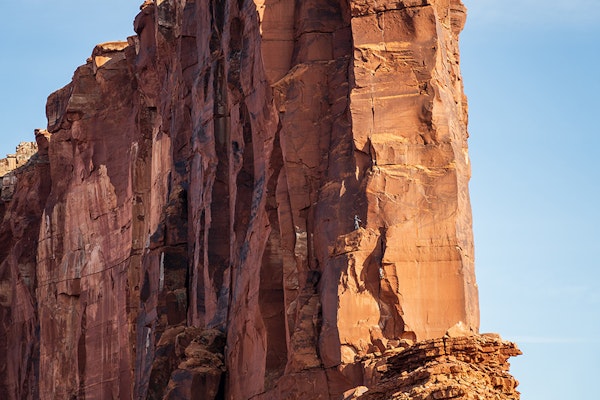
Our plan had been to do a whole tour of Utah tower climbs, a bit of a mental game since some of the towers look like they’re barely standing, but the weather had other plans for us. Having climbed the Fisher Towers – including the mega classic “Ancient Art,” on our last trip, we decided to try something different. We managed to squeeze in the Lighthouse Tower, a three-pitch squeeze chimney with an exposed stem box section that gives way to endless views of the Colorado River from the top. Once again, we somehow had the tower to ourselves.
Rock climbing, to many, can seem like a strange, painful, and dangerous waste of time. To me, it’s a way to reconnect with my body – concentrating on both micro and macro movements. To slow down and become hyper focused on the form, feel, and texture of something as simple as a rock face is like recalibrating my brain in this busy and stressful world.
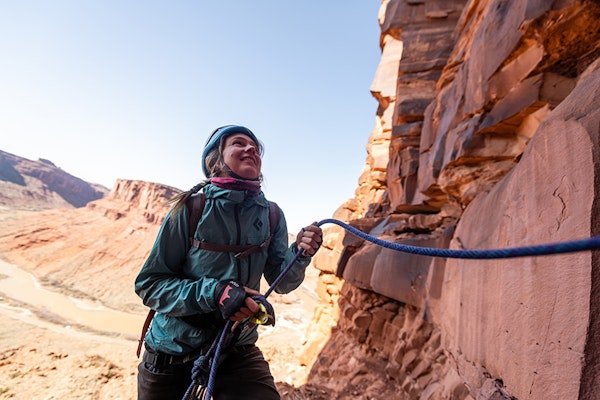
For Kale and I, climbing brings us back to the core basics of our relationship – communication, vulnerability, adventure, and fun. It’s a test of our patience with one another, of our ability to problem solve and adapt accordingly. In many ways, Van Gogh, with her less than perfect performance record, limited space, and laundry list of things in need of fixing, prepares us well for these climbing trips long before we arrive at our destination.

